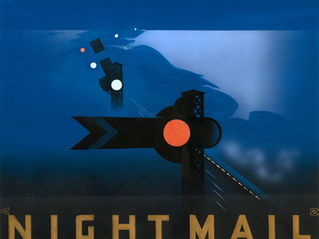Faking the Blitz
- Charles Drazin
- May 11
- 4 min read

Britain and the Blitz describes itself as an “immersive documentary” that “tells the story of how the country responded” to eight months of daily bombing from Nazi Germany. But it’s much more make-believe. Rather than get to the reality of what happened, it detaches its audience from that reality.
The indiscriminate colorization of original black-and-white footage turns out to be the least of its sins, although a sin all the same. Much worse is the film’s pretence of presenting a true account of the Blitz when it actually offers only a romanticized distortion.
It uses archive material without crediting the specific films that it appropriates, and blends in newly created footage without explaining its source. It takes both word and image out of context, presenting a fantasy dream version of the Blitz for a generation almost completely removed now from any living witnesses of what actually happened.
At one point, it does a smash-and-grab raid on one of the most moving films ever made about the Blitz – and made while the Blitz was still happening: Christmas Under Fire. The theft includes taking words from the wonderful original commentary by the American journalist Quentin Reynolds, who had a few weeks earlier become famous for his commentary to the first documentary ever to be shot about the Blitz, London Can Take It! Shown in the United States in October 1940, London Can Take It! made a vital contribution in persuading America to support Britain in the fight against Nazi Germany. But neither Reynolds nor the film itself is mentioned.
It quickly became obvious to me that Britain and the Blitz would have no compunction about stealing from the greatest wartime film-maker of them all, and I expected the wholesale theft from Humphrey Jennings that indeed takes place, as Britain and the Blitz plunders, as usual without credit, Fires Were Started and Listen to Britain.
It’s worth looking more closely at the use of these films to appreciate the difference between documentary at its finest and the disrespectful fakery that so often passes for documentary on Netflix.
Take, for example, the horse that clops into the Netflix film about half way through. Britain and the Blitz uses the sequence to illustrate the story of a Scottish woman called Frieda Jackson, who describes how she left home to go and work in a factory. It is thrown into the mix like a piece of meat on a chopping board, the sequence being carved from Listen to Britain, arguably the greatest documentary film ever made – a masterpiece of montage that Humphrey Jennings co-directed with its editor Stewart McAllister (although the film is not actually about the Blitz).

While Jennings respected the truth of an image and its original context, Britain and the Blitz routinely obliterates the original context. When the horse was filmed, Jennings went to great trouble over how it would appear in a 4:3 frame but also how it would sound, although it was a time when shooting synchronised sound on location was a significant logistical challenge, requiring a heavy truck.

“The soundman could never understand why he wanted to shoot so many things sync,” remembered Joe Mendoza, who was Jennings’ assistant on the film. “We all had to get up very early one morning to shoot. It’s the shot of the horse clopping by on the rainy pavement … Humphrey wanted to shoot it in sync. And the soundman said, ‘You can’t get everybody up at five o’clock in the morning. We can do a wild track of the horse’s hooves.’ But Humphrey said, ‘No. I want to do it in sync, because it makes a total world. You’ve got the noise of the people passing and the horse and the wind and the people passing in front of the camera: it’s all real. And that was the thing about Humphrey: he was reproducing reality… He wasn’t a film-maker, capital F, capital M. He made Humphrey Jennings pictures. That was what other people could never really understand, because they were used to making films in a conventional way for conventional reasons. That’s why people always regarded him as a sort of amateur.”
I suppose that Britain and the Blitz – in harnessing the digital power to fabricate that has become routine today – is a film made in a conventional way for conventional reasons. But for anyone who cares about Britain’s great documentary tradition, it is sad – if symptomatic of our times – that such a film thinks it is OK not to acknowledge the earlier documentaries that it plunders.
Presumably knowing that it would be pursued by corporate lawyers if it didn’t, Britain and the Blitz credits the use of the Irving Berlin song “Cheek to Cheek”. But if it can do that, why can it not credit the much more substantial use of Charles Hassé’s Christmas Under Fire or Jennings’ Fires Were Started and Listen to Britain?
Britain and the Blitz is far from what its production company, 72 Films, calls – with extraordinary presumption – the “definitive story of how Britain survived”. It is silly to suggest that such an account could even exist, but if you want at least to get a true taste of wartime Britain, you would do far better to watch – in black-and-white – London Can Take It!, Christmas Under Fire and Listen to Britain, all three of which can be seen for free online. They are extraordinary films that deserve the respect that Britain and the Blitz fails to show them.
***
The first and by far the most important film about the Blitz ever made – because when Britain faced invasion, it was making the case for urgent American support – was London Can Take It! For an account of why it mattered and why it is relevant today, see: https://www.charlesdrazin.com/post/london-can-take-it












Comments